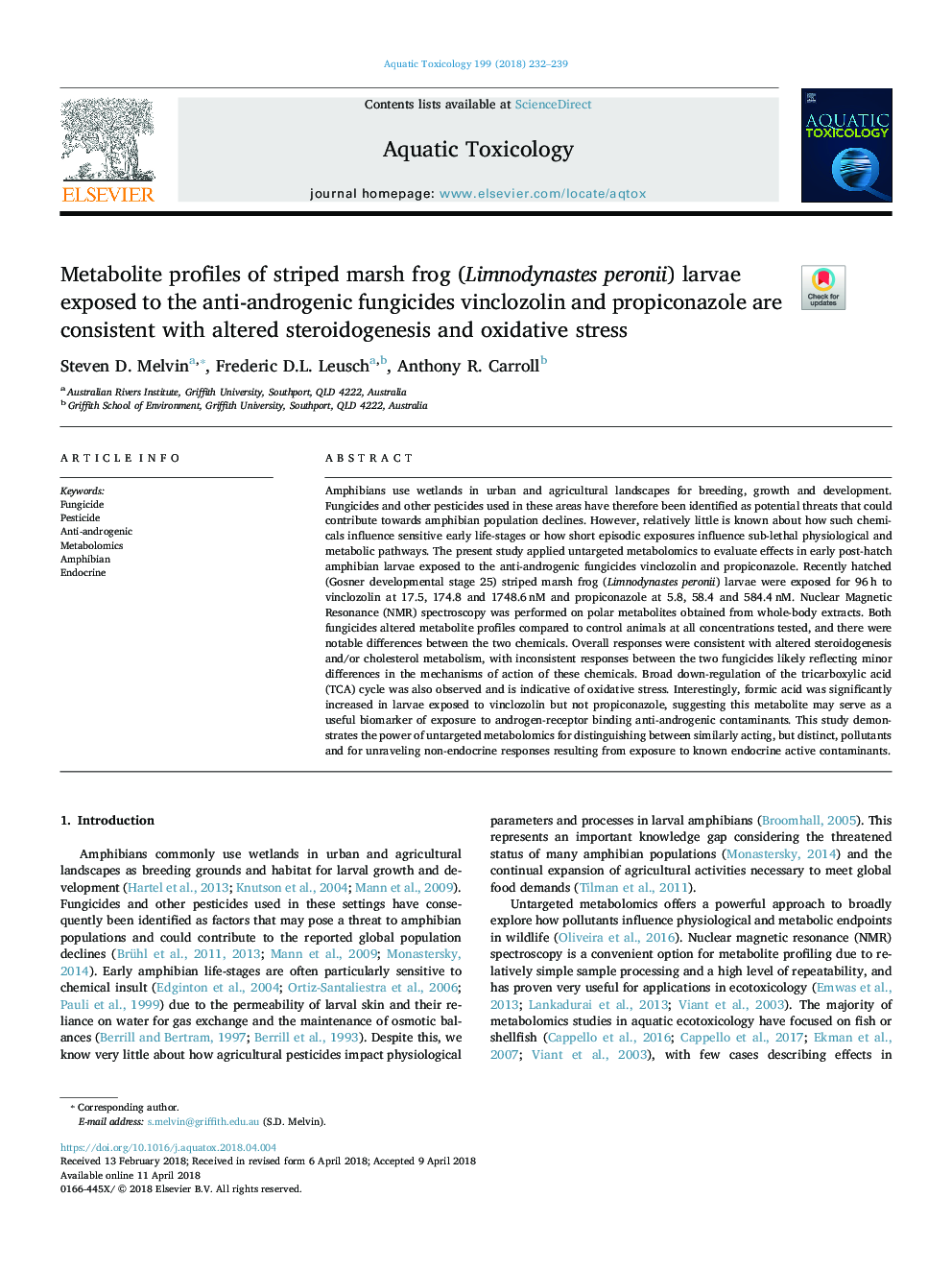| کد مقاله | کد نشریه | سال انتشار | مقاله انگلیسی | نسخه تمام متن |
|---|---|---|---|---|
| 8883756 | 1625906 | 2018 | 8 صفحه PDF | دانلود رایگان |
عنوان انگلیسی مقاله ISI
Metabolite profiles of striped marsh frog (Limnodynastes peronii) larvae exposed to the anti-androgenic fungicides vinclozolin and propiconazole are consistent with altered steroidogenesis and oxidative stress
دانلود مقاله + سفارش ترجمه
دانلود مقاله ISI انگلیسی
رایگان برای ایرانیان
کلمات کلیدی
موضوعات مرتبط
علوم زیستی و بیوفناوری
علوم کشاورزی و بیولوژیک
علوم آبزیان
پیش نمایش صفحه اول مقاله

چکیده انگلیسی
Amphibians use wetlands in urban and agricultural landscapes for breeding, growth and development. Fungicides and other pesticides used in these areas have therefore been identified as potential threats that could contribute towards amphibian population declines. However, relatively little is known about how such chemicals influence sensitive early life-stages or how short episodic exposures influence sub-lethal physiological and metabolic pathways. The present study applied untargeted metabolomics to evaluate effects in early post-hatch amphibian larvae exposed to the anti-androgenic fungicides vinclozolin and propiconazole. Recently hatched (Gosner developmental stage 25) striped marsh frog (Limnodynastes peronii) larvae were exposed for 96â¯h to vinclozolin at 17.5, 174.8 and 1748.6â¯nM and propiconazole at 5.8, 58.4 and 584.4â¯nM. Nuclear Magnetic Resonance (NMR) spectroscopy was performed on polar metabolites obtained from whole-body extracts. Both fungicides altered metabolite profiles compared to control animals at all concentrations tested, and there were notable differences between the two chemicals. Overall responses were consistent with altered steroidogenesis and/or cholesterol metabolism, with inconsistent responses between the two fungicides likely reflecting minor differences in the mechanisms of action of these chemicals. Broad down-regulation of the tricarboxylic acid (TCA) cycle was also observed and is indicative of oxidative stress. Interestingly, formic acid was significantly increased in larvae exposed to vinclozolin but not propiconazole, suggesting this metabolite may serve as a useful biomarker of exposure to androgen-receptor binding anti-androgenic contaminants. This study demonstrates the power of untargeted metabolomics for distinguishing between similarly acting, but distinct, pollutants and for unraveling non-endocrine responses resulting from exposure to known endocrine active contaminants.
ناشر
Database: Elsevier - ScienceDirect (ساینس دایرکت)
Journal: Aquatic Toxicology - Volume 199, June 2018, Pages 232-239
Journal: Aquatic Toxicology - Volume 199, June 2018, Pages 232-239
نویسندگان
Steven D. Melvin, Frederic D.L. Leusch, Anthony R. Carroll,